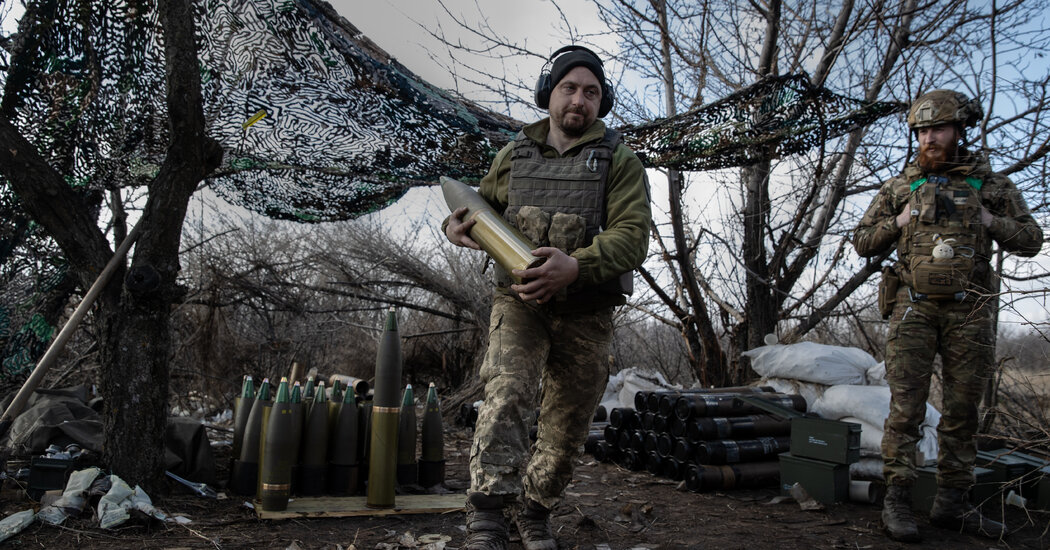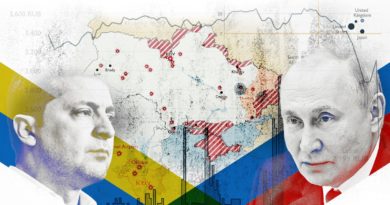Ukraine’s Top Generals Want to Keep Fighting for Bakhmut

Sergei K. Shoigu, the Russian defense minister, made a rare visit to occupied Ukrainian territory amid the lackluster performance of Russia’s renewed military offensive and growing tensions with the Wagner mercenary group, a prominent paramilitary ally.
Mr. Shoigu toured the occupied southern Ukrainian city of Mariupol, according to videos and statements released by the Russian defense ministry on Monday. He also visited a Russian military base in the eastern Donetsk region on Saturday.
Mr. Shoigu’s visit to Ukraine came days after Yevgeny Prigozhin, the leader of the Wagner group, Russia’s largest paramilitary force, escalated his criticism of Mr. Shoigu and other senior military commanders, accusing them of being out of touch with frontline reality and prioritizing politics over military performance.
A year into the war in Ukraine, the Russian military has suffered staggering losses — approaching as many as 200,000 troops killed or wounded, Western officials say, and thousands of tanks and armored vehicles destroyed or captured by Ukraine. Recent Russian attacks along the front lines in eastern Ukraine were at first regarded as exploratory stages of Russia’s long-anticipated spring offensive, but are increasingly being seen by military analysts as the best that exhausted Russian forces can manage.
The video montages released by the defense ministry showed a stony-faced Mr. Shoigu looking over maps and talking to subordinates in Ukraine. The somber scenes, many of them muted, stood in sharp contrast to Mr. Prigozhin’s histrionic frontline video dispatches, in which he has paraded people he said were Ukrainian prisoners of war on the rooftop of a bombed-out building, challenged the Ukrainian president to a duel from an airborne fighter jet, and overseen the loading of coffins filled with what he claimed were fallen Ukrainian soldiers.
Such eye-catching videos have allowed Mr. Prigozhin to portray his Wagner mercenary group as the vanguard of Russia’s military effort in Ukraine, overshadowing Mr. Shoigu’s leadership and, according to some military analysts, deepening a personal enmity between them.
Mr. Prigozhin has used his videos to emphasize the grinding progress of Wagner’s assault on the eastern Ukrainian city of Bakhmut, while Mr. Shoigu visited a frontline section where the Russian army recently suffered its biggest military disaster of the winter.
Russia’s defense ministry said Mr. Shoigu went on Saturday to the command center of the Russian forces in the southern part of the Donetsk region, where Russian soldiers and marines for the past several weeks have tried storming the Ukrainian town of Vuhledar, at great cost.
During the visit, Mr. Shoigu met with Rustam Muradov, the commander of Russian forces in the region, whom military bloggers allied to the Wagner group have accused of wasting hundreds of lives and heavy weapons in futile frontal assaults on Vuhledar and the surrounding areas.
On Monday, Mr. Prigozhin resumed his public feud with Russia’s military command. In a statement published on social media, Mr. Prigozhin claimed his representative had been barred from the Russian military headquarters in Ukraine after he requested more ammunition for Wagner.
Nevertheless, “We keep smashing A.F.U. around Bakhmut,” Mr. Prigozhin claimed, using an abbreviation for the Ukrainian armed forces.
The divisions between the Wagner forces and Russia’s military leadership have not escaped the notice of Ukraine’s Western allies.
“The fissures are there,” the U.S. defense secretary, Lloyd J. Austin III, told reporters on Monday. “You know, you see that playing itself out in open media from time to time.”
Mr. Austin said that Wagner’s forces “have been a bit more effective” than traditional Russian troops, but noted that many of the former prisoners that the mercenary group had deployed have met their demise.
“Now, having said that,” he added, “we’ve not seen exemplary performance from the Russian forces writ large.”
This article has been archived for your research. The original version from The New York Times can be found here.


